Introduction:
One of the most important decisions faced by entrepreneurs when launching a new business is whether to develop a prototype or a Minimum Viable Product (MVP). Gaining an understanding of the differences, goals, and advantages of each may have a big impact on how your product development project develops and, ultimately, how successful your business is.
What is a Prototype?
Prototypes are early models or iterations of products used to evaluate and test concepts or methods. Before full-scale development starts, it is typically a crude, functioning model used to illustrate and evaluate the functionality and design of the product. Prototypes are concrete representations of concepts that allow stakeholders to comprehend, test, and consider these risk-reduction tactics while iterating on the features and design of the final product. They can be low-fidelity, such as basic drawings or mock-ups, or high-fidelity, such as interactive digital models.
A prototype essentially provides a response to the query, “Can this concept work?” It helps you to look into design options, gather feedback from stakeholders and clients, and make decisions on the project’s viability and direction.
What is an MVP (Minimum Viable Product)?
A Minimum Viable Product, or MVP, is a development approach in which a new product is introduced with rudimentary but necessary functionality to appease early users. The MVP is a working product that can be implemented and utilized in a real-world setting; it is not only a proof of concept. With the least amount of resources possible, an MVP aims to verify the product idea, get user input, and direct future development in accordance with demands and usage in the real world.
An MVP enables businesses to swiftly join the market, begin making money, and iteratively improve the product. An MVP in software development is a working software solution that has just enough capabilities to draw in beta testers and support the idea for the product. This strategy lowers risks, saves development costs, and improves knowledge of client demands.
Differences Between a Prototype and an MVP
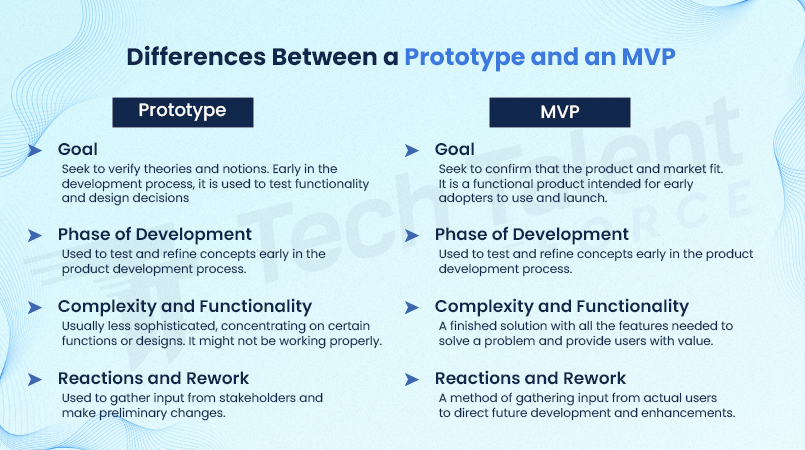
Understanding the differences between an MVP and a prototype is crucial to developing a successful product. These are the main differences:
1. Goal:
Prototype: Seek to verify theories and notions. Early in the development process, it is used to test functionality and design decisions.
MVP: Seek to confirm that the product and market fit. It is a functional product intended for early adopters to use and launch.
2. Phase of Development:
Prototype: Used to test and refine concepts early in the product development process.
MVP: Created following the prototype phase to verify the product’s viability among real customers.
3. Functionality and Complexity:
Prototype: Usually less sophisticated, concentrating on certain functions or designs. It might not be working properly.
MVP: Minimum Viable solution: A finished solution with all the features needed to solve a problem and provide users with value.
4. Reactions and Rework:
Prototype: Used to gather input from stakeholders and make preliminary changes.
MVP: A method of gathering input from actual users to direct future development and enhancements.
Techniques for Reducing Risk in Product Development
One of the most important aspects of creating MVPs and prototypes is risk avoidance. Consider using the following tactics to lower risks:
1. Comprehensive Research : To comprehend customer wants and market demand, do a thorough analysis of the market.
2. User Involvement : To get information and verify hypotheses, include possible users early in the development process.
3. Iterative Development : Use a method to development that is iterative in nature to enable ongoing enhancement in response to input.
4. Cost Management : Avoid over-engineering and concentrate on key features to keep development costs down.
5. Flexible Development : Keep your development process adaptable so you may change course or make adjustments to the product in response to customer input and market dynamics.
Economical Product Development
By concentrating efforts on the most important components of the product, both MVPs and prototypes provide affordable methods of product development. By spotting design faults and functional problems early on and averting expensive adjustments later, prototypes can save expenses. MVPs lower financial risk by allowing entrepreneurs to test the market with a working product before investing in a fully complete version.
Is an MVP or a Prototype Better for Your Startup?
The stage, objectives, and financial resources of your business will determine whether to proceed with an MVP or a prototype.
When to Use a Prototype: A prototype is a good alternative if you need to test and explore different design possibilities and features while your product is still in the early phases of development. It enables you to conduct tests and gather input before to devoting yourself to comprehensive development.
When to Select an MVP: An MVP is the best option if your concept has been verified and you’re prepared to launch. It helps you to keep expenses under control while launching a working product with essential functionality, getting feedback from users, and iterating based on actual usage.
Product Development and MVP Services
MVP development services are designed to help new businesses create and introduce their Minimum Viable Products (MVPs). These services guarantee a quick time to market and efficient use of resources by offering experience in building a viable product with the required features. From concept to launch, professional coaching might assist entrepreneurs in creating their MVPs. They can also gain from continual improvement based on user input.
IT Product Management and Development
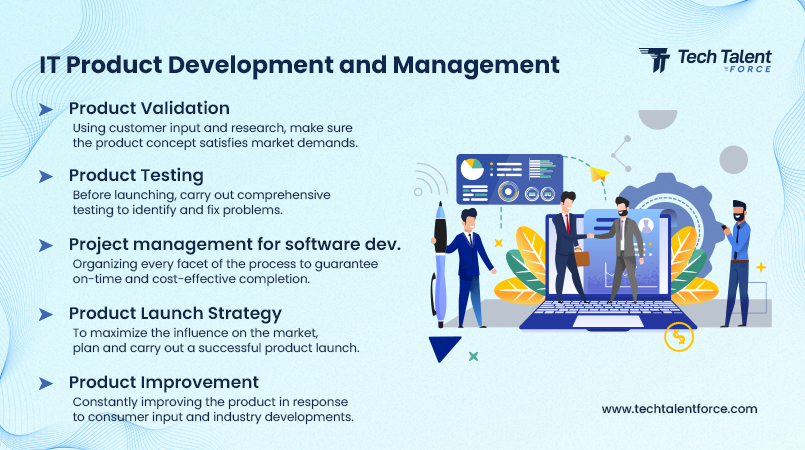
Several Crucial Practices Are Involved in Effective IT Product Development:
1. Product Validation: Using customer input and research, make sure the product concept satisfies market demands.
2. Product Testing: Before launching, carry out comprehensive testing to identify and fix problems.
3. Project management for software development: Organizing every facet of the process to guarantee on-time and cost-effective completion.
4. Product Launch Strategy: To maximize the influence on the market, plan and carry out a successful product launch.
5. Product Improvement: Constantly improving the product in response to consumer input and industry developments.
In summary
The decision of whether to build an MVP or a prototype may have a big impact on the startup ecosystem in terms of resource efficiency and product success. While MVPs are crucial for swiftly entering the market and confirming the product-market fit, prototypes are necessary for early-stage idea and design validation. When applied correctly, these strategies may reduce risks, control expenses, and open the door for a fruitful product launch and continuous development. Gaining an understanding of these ideas and utilizing MVP Development Services may give startups a strong platform for expansion and creativity in the highly competitive market environment.
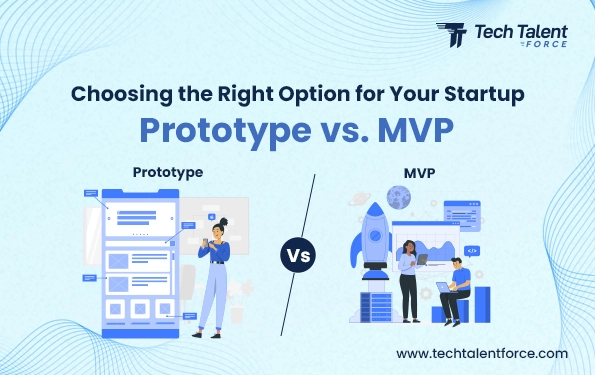

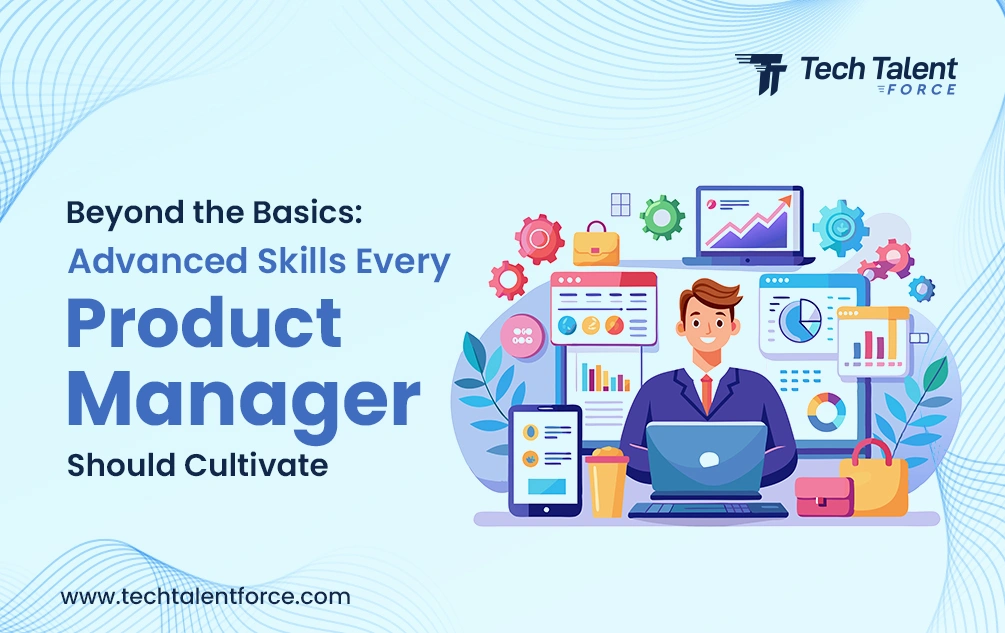
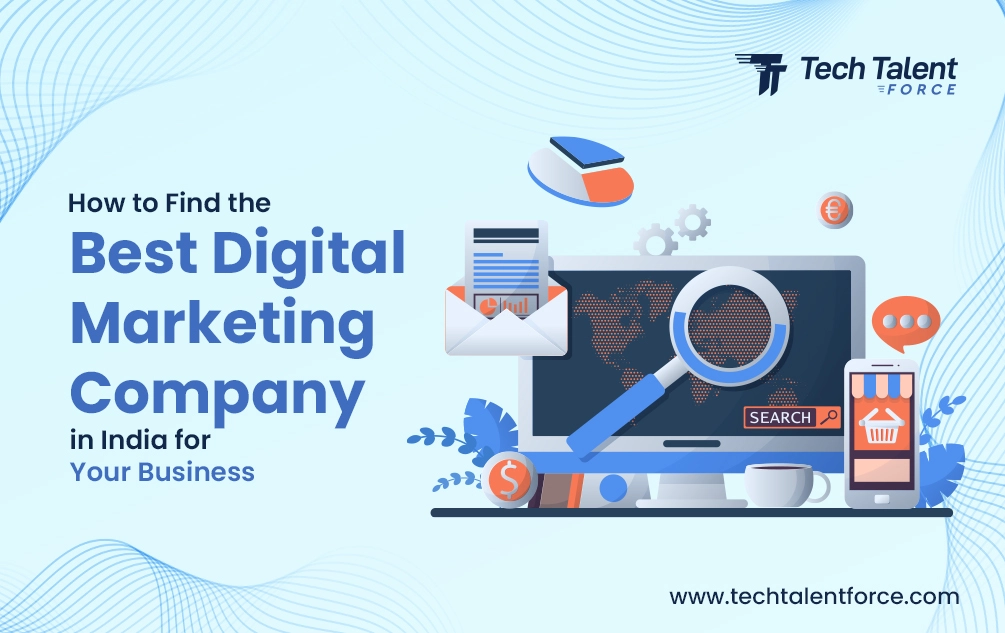
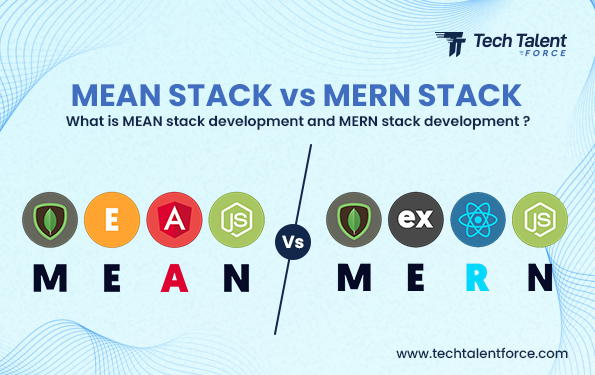
No Comments